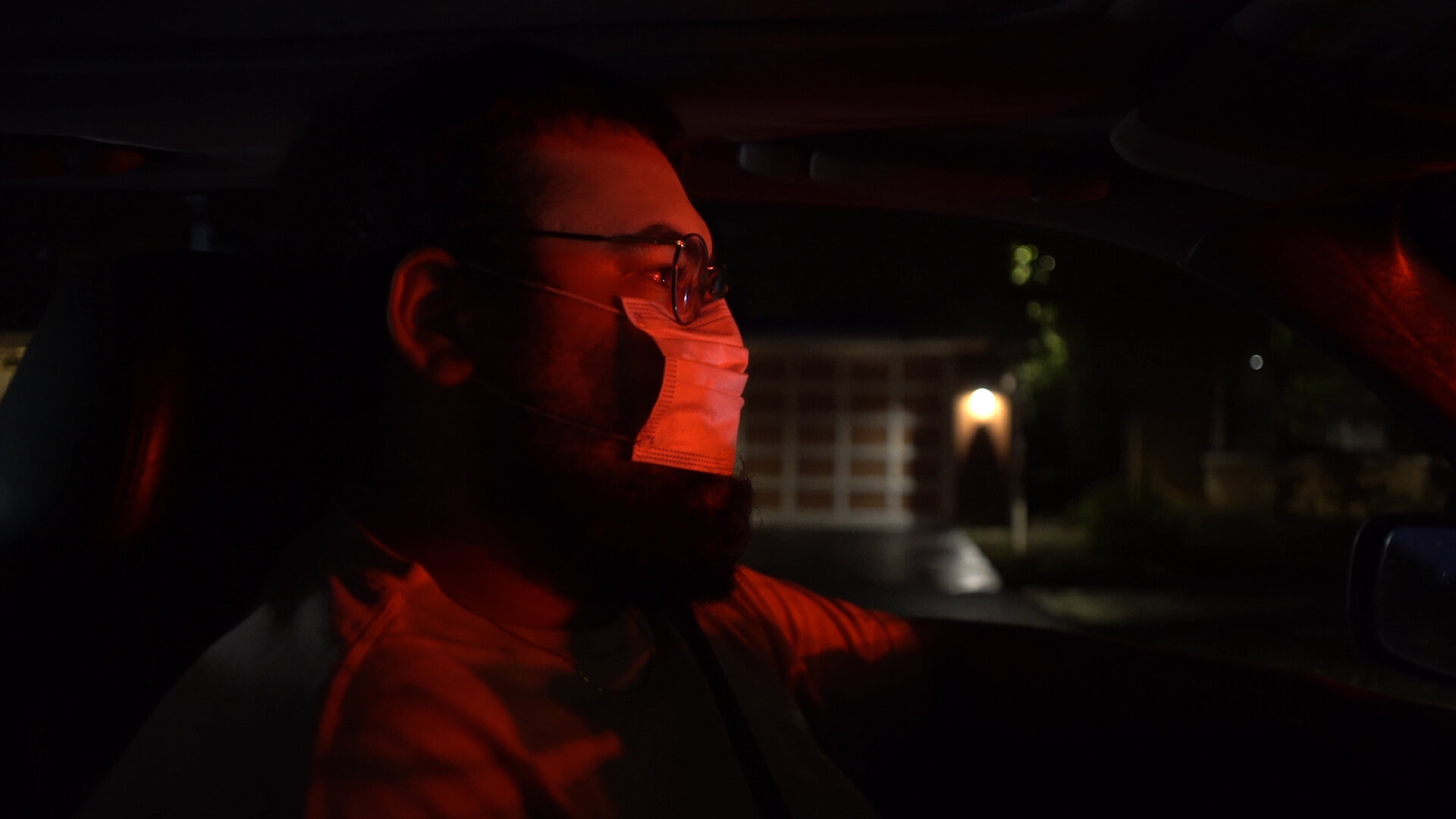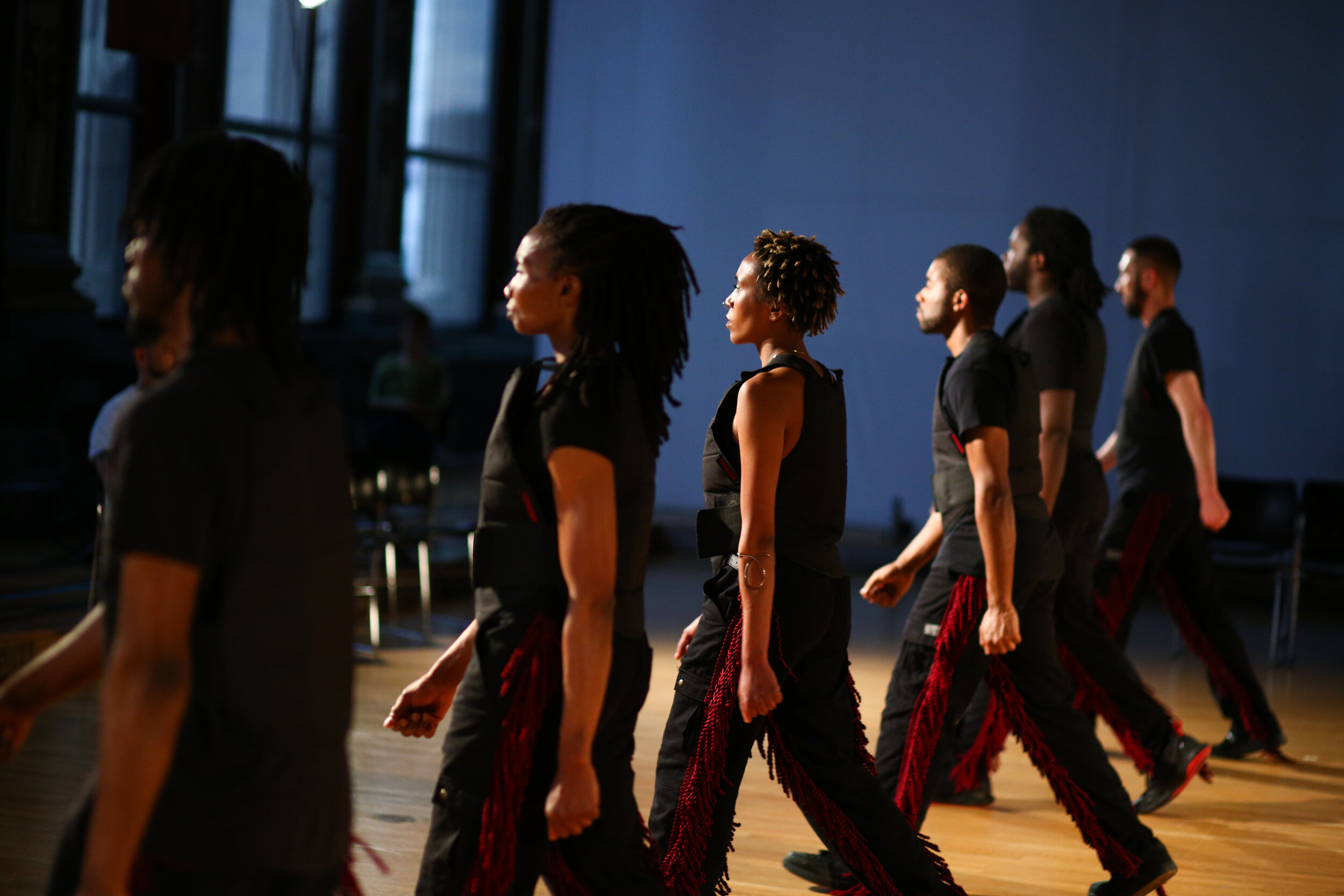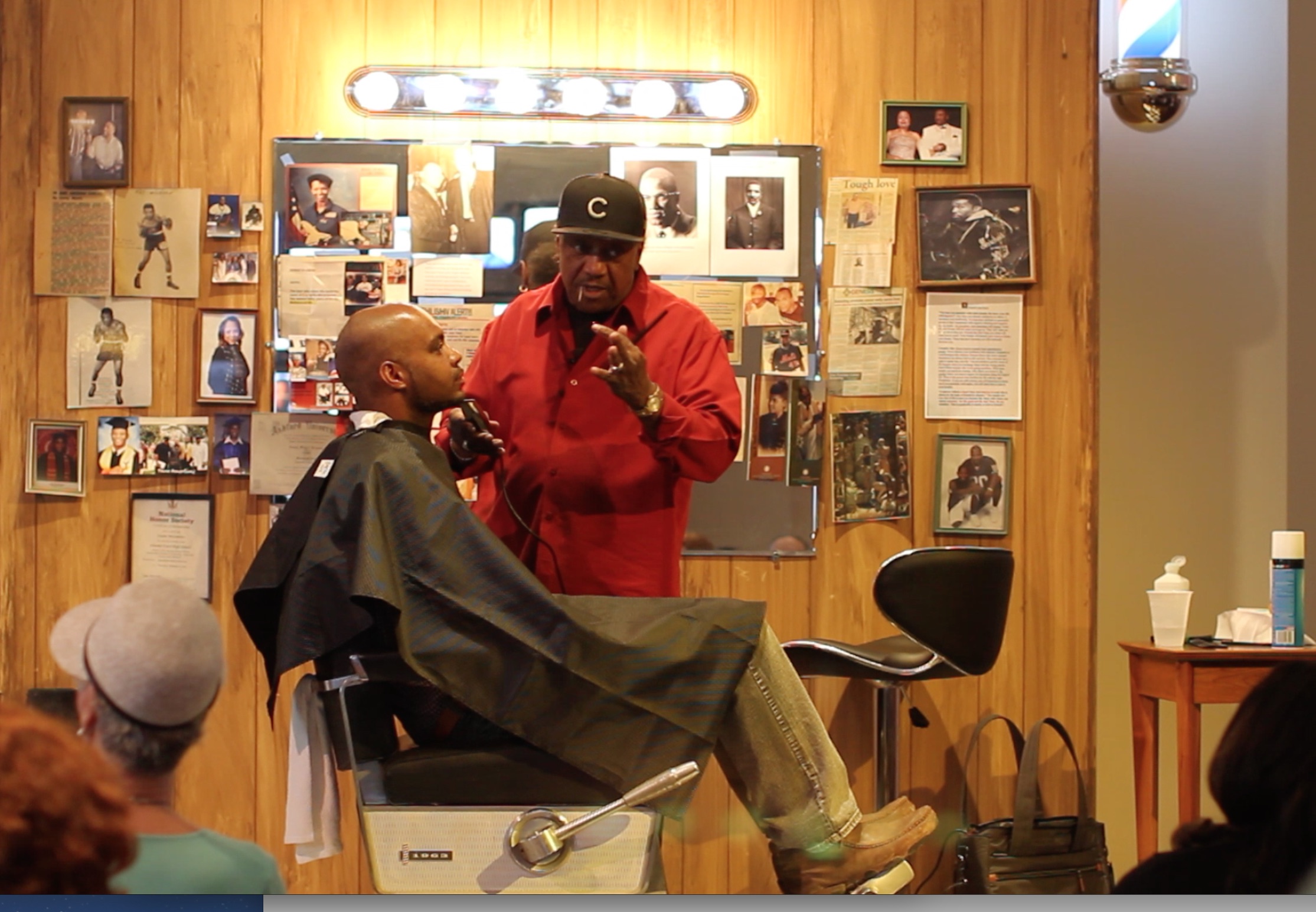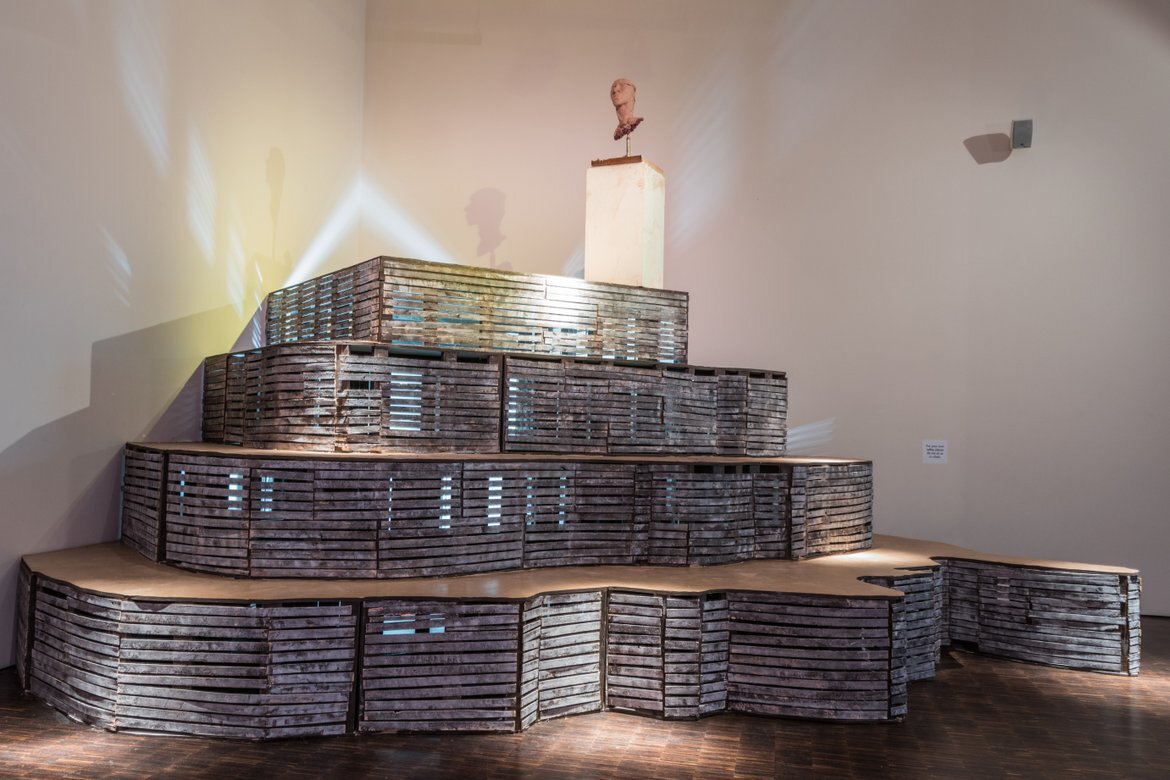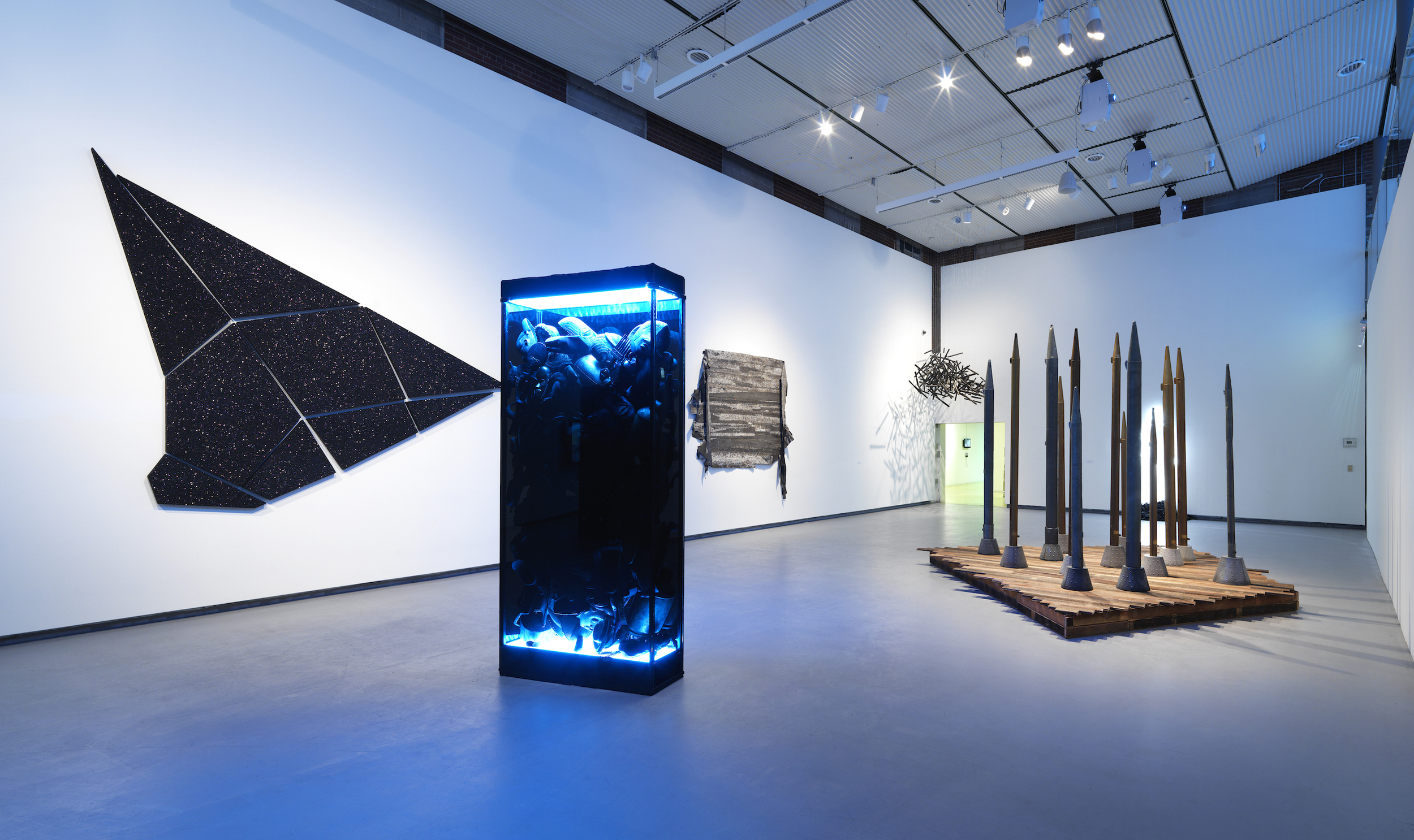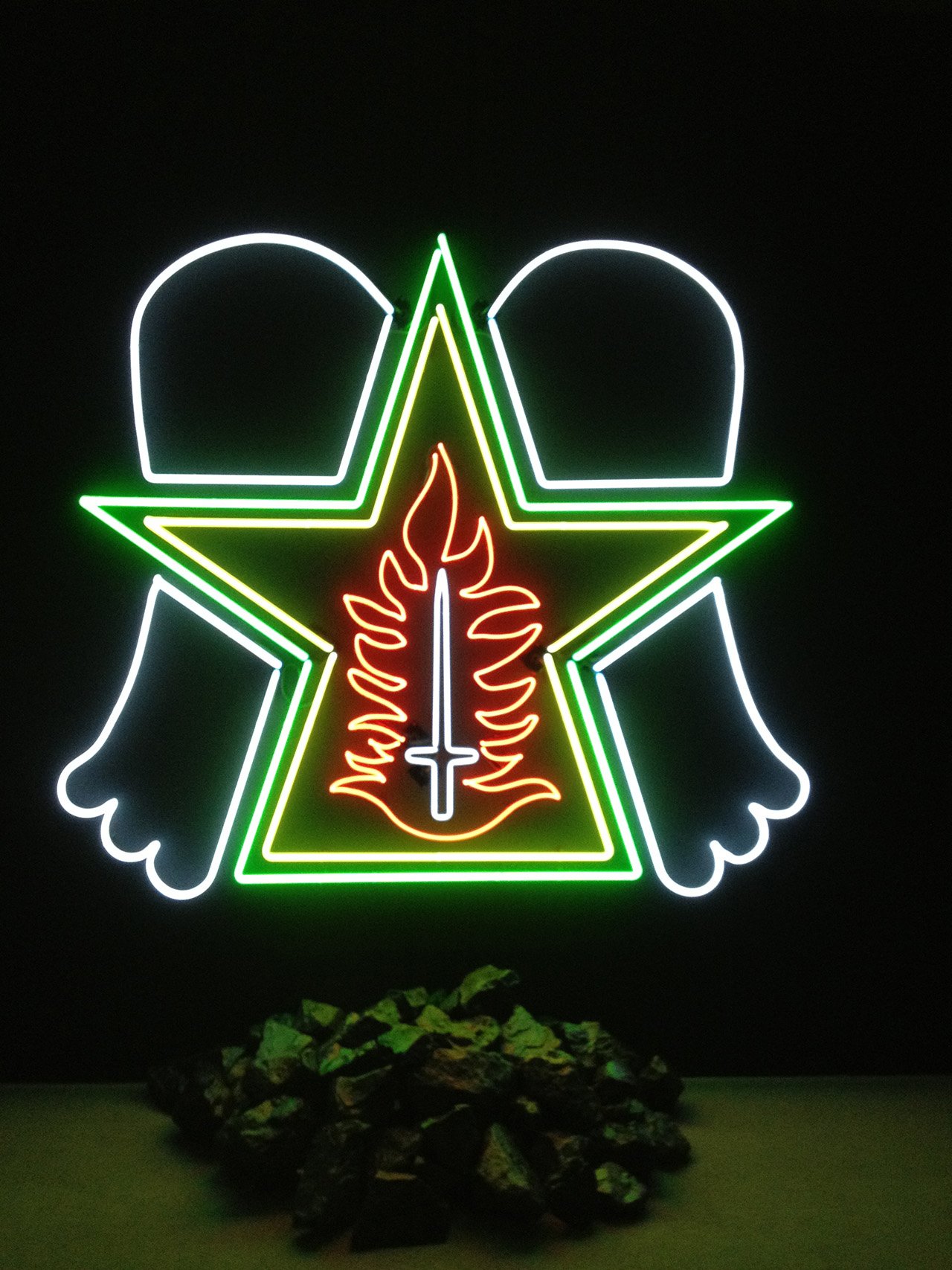As the recipient of the Smithsonian Artist Residency Fellowship, Pinder had access to the National Museum of African American History and Culture’s Great Migration Home Movie Archives. This collection beautifully encapsulates eighty years of family memories and images. Over the last year, Pinder and his team have scoured the collection to find intimate moments that resonate with the Black experience from decades past. Focusing on dance and movement, the video artwork captures a series of lyrical moments that transition intensely into something dark and spiritual.
Read MoreEffortlessly floating, the artist competes with various forces – gravity being only one of them – as he tests his physical endurance to stay ascendant while suspended vertically over a plinth. The risk of failure is omnipresent. He compels the viewer to witness the historical layers of pain and tenuous labor that constantly threaten the possibilities of the monumental: Respect, remembrance, and being seen.
Read MoreIn 2015, Thamsanqa Jantjie drew attention for his delirious “signing” during Nelson Mandela’s memorial service, the most globally-viewed African event to date, unintentionally shedding light on corruption in South Africa and the disenfranchisement of the Deaf community. When confronted with his administration’s handling of Jantjie’s hiring, President Zuma took the insult a step farther and coined the fake signs as ‘Zulu-Sign Language’.
Read MoreIn this one hour performance, distilled into a video synopsis, the artist provokes layers of surveillance by assembling black and brown performers to drive slowly through Mount Greenwood, Chicago, where many police officers reside. The drivers, in an ordered assembly of twenty vehicles, observe the neighborhood and disrupt traffic patterns in this sleepy, conservative community. Quietly, while being observed, a team of uniformed police gather on the streets and a police chopper appears overhead. Tensions rise as anxious residents and police seek to gain control over the situation.
Read MoreA turbulent labor dispute in Elaine, Arkansas in 1919 led to hundreds of killings in the heart of the Deep South. An unmarked mass grave in which many were buried lies in a field outside of town near a rusted water tower. In this video, the artist makes a journey across a budding cotton field to arrive at the subtle burial mound and then, back again. The artist ventures into a hostile space to grapple with the unmarked symbols of systemic oppression.
Read MoreEugene Williams, age 17, was stoned to death by white teenagers while floating over to the “white side” of a Chicago beach on July 27th, 1919. On the exact time and date 100 years later, the artist sends a group of performers adrift. Connected by rope in the mighty Lake Michigan, the large ensemble becomes a monument to the moment in which racial difference tore apart the fiber of Chicago. Now, in the present, a mixed-race group struggles to hold together, as the same forces that led to Eugene’s float are still present today.
Read MoreFire and Movement retraces the route and narrative of the 1917 Camp Logan Uprising, one of Houston’s most complicated and often misrepresented historical events. The uprising saw African American soldiers of the 24th United States Infantry revolt and attempt to march on the city in response to the abuse from white citizens and the police in Jim Crow-era Houston. In this work, a group of trained performers reenact the militaristic formations and movements the soldiers took, as they sought to gain control of the racist situation.
Read MorePreparing to engage with demons of past and present day, This is Not a Drill considers training techniques inspired by the Student Non-violent Coordinating Committee, The Black Panther Party, and Marine Corps. The artist and performers rehearse close-order drills, bo staff training, boxing, and shooter drills to delve into communal strength and find unity through ritualized physical routines. Trained by seasoned Gulf War vets, the performance crew spent months researching and readying themselves. The audience bears witness to the deliberate series of training exercises, as if they walked in upon the preparations for an inevitable fight.
Read MoreIn Sonic Boom, Pinder initiated a spiritual journey that ended up in the very location where it began. This exercise in futility proves to be a rite of passage, as he tests the threshold of a vintage “muscle car.” Accompanied by a local brass band, fanfare and ritual gives way, as the sound of the car engine echoes against the walls of the old Walter Reed Veterans Hospital in Washington, DC. Pinder accelerates the vehicle to the limit, and spectators watch as flames threaten to end the work prematurely.
Read MoreThe second performance, Joe's Barbershop, features Joe McLemore, a 73 year-old Iowa barber, cutting hair in the museum as he discusses his unique views on race relations for blacks in the Quad Cities (QC). His frank monologue revealed a sober dose of self-determination in the face of racism.
Read MoreThe symbol of the Ghost Light references the theatrical superstition in which the darkened stage is illuminated by a light, often a single electric bulb mounted to a stand, intended to ward off the theater’s ghosts. In the absence of a performance, the Ghost Light becomes representative of all of the lives and narratives that have inhabited that space.
Read MoreToken, features a conservative white midwestern artist that exercises his right as an artist to sculpt from black models. The subject matter is, not too different from recent conversations about race at the Whitney, but is more complex than anyone could ever have imagined.
Read MoreOnyx Odyssey is a journey into blackness and all its complexities as navigated by artist Jefferson Pinder. On a literal level, blackness is a color property experienced through sight resulting from the absence of light, prompting the inability to see. In cultural discourse, blackness is a state of being constructed by an exponential variety of experiences that make up a person’s character in relation to the color of his or her skin. Scholar Rone Shavers explains “’blackness’ is a specific set of cultural and social tropes that mark and define an ethnic or racial identity and implies a shared notion of historical, social, and cultural traditions.”1 Both the scientific and the socially-constructed definitions of blackness inform the hauntingly mysterious and powerful work of interdisciplinary artist Jefferson Pinder.
Read MoreComposed primarily of the cheapest and most ubiquitous art material, glitter, I am seeking to create a formal doorway into the universe. This 15’ sculptural wall piece is both upward moving and downward tumbling. This intense construction comprises various irregular shapes that are predicated on imbalance and tension.
Read MoreThe shape of this object is the exact dimensions of Stanley Kubrick’s Monolith from 2001: A Space Odyssey. A symbol of unseen intelligence in the movie, the monolith is a mystery. The cryptic object was used to instruct intelligent life form and was deep black. Kubrick mentioned in an interview that he didn’t want the Monolith to be an, “Advanced television teaching machine…”. Indeed, it was seen as an otherworldly spiritual object that contained a wealth of knowledge. All the monoliths are black, extremely flat, non-reflective rectangular solids whose dimensions are in the precise ratio of 1: 4: 9 (the squares of the first three positive integers). These dimensions are the main source of debate about the simple external design of the monoliths. It is suggested in the novel 2001 that this number series does not stop at three dimensions.
Read MoreWith Moriaen’s Shadow, I use organ pipes as personifications of history and experience. The object, coupled with an audio soundscape, presents a textured, collaged representation of history: lynching, the black church, space exploration, and Afro-Futurism. The organ pipes are from a brilliantly modest, and defunct, Baptist church in rural Pennsylvania, and the essence of the work relates to the concept of sound continuing after it is first heard. The objects—dented, galvanized steel pipes—represent the many facets that collectively signify a damaged but unified identity. Moriaen’s Shadow references verticality, singularity, and strength. Moriaen refers to the only black Knight referenced in King Arthur’s court. He was searching for his identity while being ridiculed and alienated by the white community. The objects reference the legacy of the black church, as well as the Klan.
Read MoreIn 2002, I embarked on a series of video work called the Inertia Cycle. The primary focus of these videos is to explore physicality and intense exertion as it relates to the black body. As a society, we admire athletics. We revel in watching athletes push their bodies to their limits. In the Inertia Cycle I am exploring the theatrics of physical labor. For Northern Spark, the video performance piece Relay conveyed the quiet heroics of a community. Working as a meditative projection, viewers caught glimpse of Somali-Americans using the action of running as a metaphor for labor in a transformative journey. In this work, a continual stream of people are striving to move forward.
Read More


